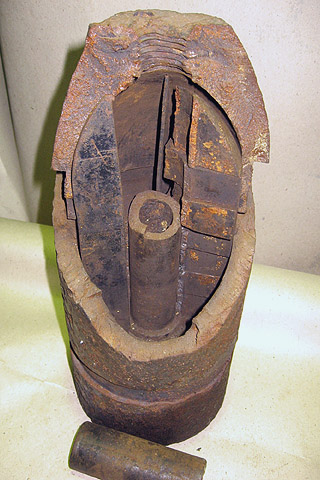Sometimes your assumptions about other peoples' ignorance - as opposed to their willingness to simplify to avoid wasting bandwidth - become decidedly irritating. Your ignorance of colloquial English-as-she-are-spoke, especially as she are spoke in Western military circles, is not remotely your fault, but does sometimes compound the problem.
I am perfectly aware of how [or poorly] Major-General Shrapnel's little brain-storm functioned, and equally aware that the term VT fuse is technically not applicable either to his fuses or the various mechanisms that replaced them [none of which are relevant to this discussion, BTW]. However, the concept of "variable time" fusing _is_ and since a Variable Time fuse is how it is done now it makes a convenient short-hand for a post intended to point out that you had completely missed somebody else's point. I paid you the honor of assuming that it was because you were unaware of how the word 'shrapnel' is often applied in current usage, not the result of a deliberate refusal to comprehend.
Dilandu wrote:Louis R wrote:Differing usages for 'shrapnel'.
In this case the reference is to shell splinters, not VT-fused anti-personnel rounds.
...I'm sorry, but shrapnel existed more than a century before VT fuses. The earliest shrapnel - spherical bomb, filled with bullets with small bursting charge and burning delay fuse - was invented during Napoleonic era. The "classic" shrapnel - steel tube projectile, filled with bullets with bursting charge behind - appeared later in XIX century. Basically, the idea of shrapnel was that shell burst in the air at pre-calculated point, and threw forward a relatively narrow cone of bullets, which was incredibly effective as anti-personnel weapon (but basically useless against other targets, with the exception of anti-tank use, when the fuse was set "on strike").
Problem is, penetrating force of shrapnel bullets is very limited, because their energy is taken from the remaining velocity of the shell itself. So even relatively light overhead protection would stop shrapnel.
To overcame such problem, some XIX century navies used "segmented shot", which basically contained a hard metal tube, cut on segments, and bursting charge inside the tube:
The idea was to provide heavier segments, capable of overcoming the light overhead protection. The disadvantage was the much wider dispersion cone, and smaller number of fragments, which made hit probability... somewhat limited. The segmented shots were generally used as anti-torpedo boat weapon.











